A Timeline of Aspen Ski History
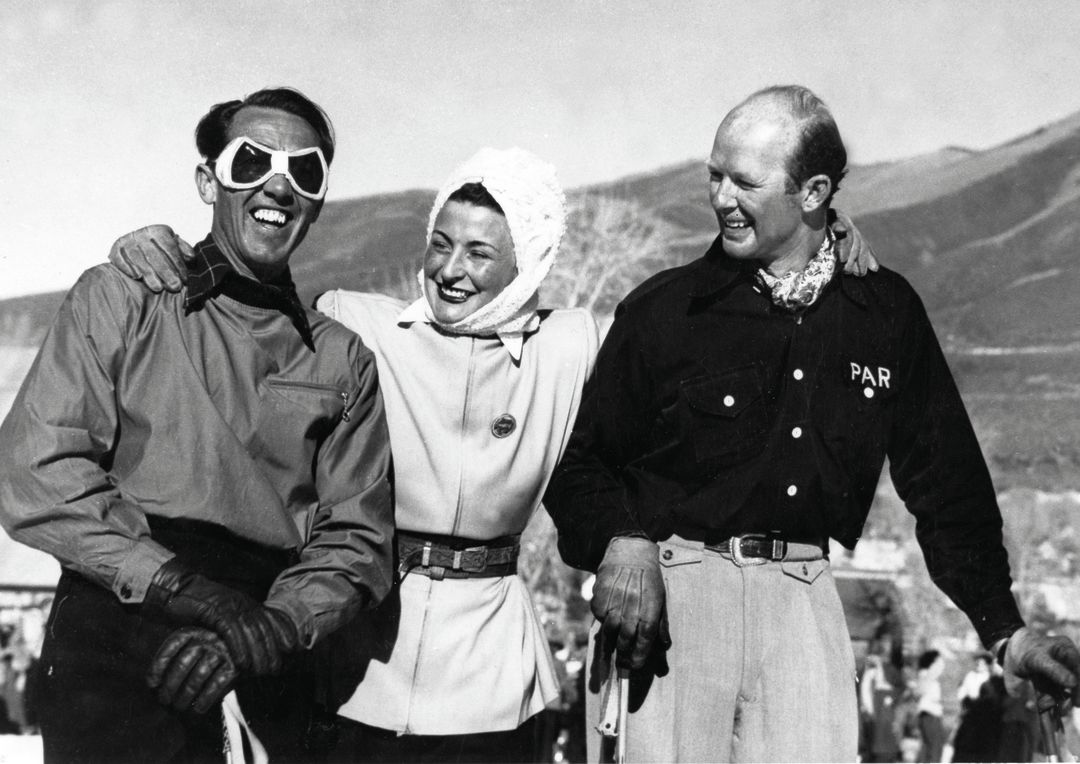
Friedl Pfeifer, Georgette Miller-Thiollière (a French alpine ski racer), and Aspen Skiing Corporation cofounder Percy Rideout at the grand opening of Ski Lift No. 1 in 1947.
Image: Knowlton Collection
1936 André Roch surveys the first ski trail on Aspen Mountain. Frank Willoughby engineers the project, and local volunteers cut the run in the summer of 1937.
1945–46 Walter Paepcke conceives of Aspen as a cultural center and plans the first ski lift with Friedl Pfeifer.
1946 The Aspen Skiing Corporation is founded by Friedl Pfeifer, Johnny Litchfield, Percy Rideout, and Walter Paepcke. D.R.C. Brown leases his mining claims on Aspen Mountain to the new company.
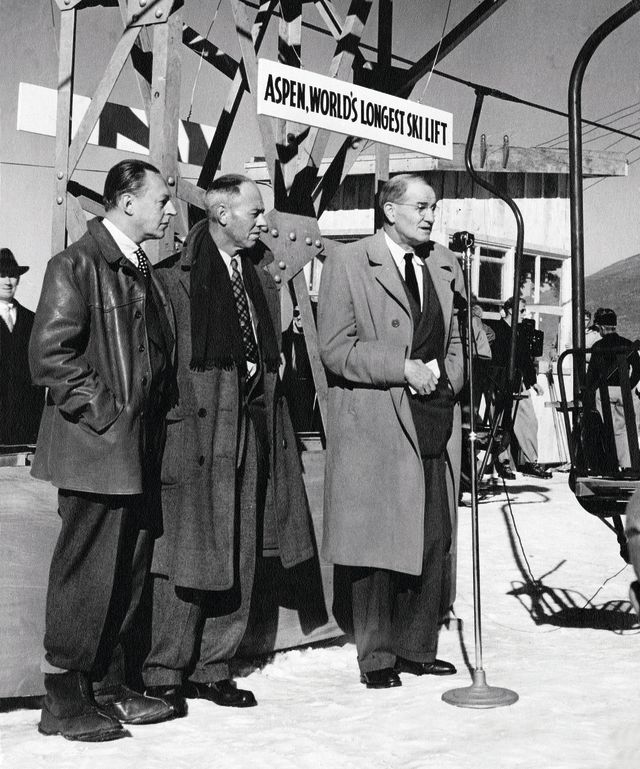
Walter Paepcke, Aspen mayor A.E. Robison, and Colorado governor-elect Lee Knous at the dedication of Ski Lift No. 1 on Jan 11, 1947
1946 Summer brings the construction of Aspen’s first chairlifts. Aspen Mountain opens on Dec 14. A season pass costs $140 ($2,070 in 2021/22). A day pass is $3.75 ($53 today).
1946 The first annual Roch Cup ski race is held. The ski train to Aspen from Denver, with dining and sleeper cars, runs regularly.
1947–48 The Little Nell run is cleared and widened as a beginners’ hill. The Constam T-bar is built.
1950 1,500 visitors book rooms in town as Aspen hosts the first FIS Alpine World Ski Championships outside of Europe.
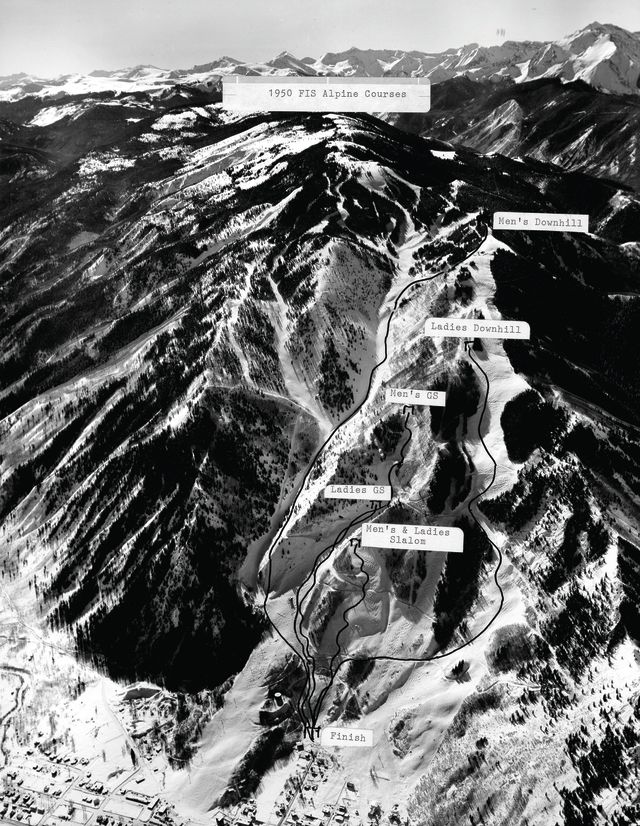
Durrance’s hand-annotated map of the 1950 World Championships race course, which established Aspen on the world stage
Image: Durrance Collection
1954 Lift Three from lower Tourtelotte to the Sundeck is built for $120,000 ($1.2 million today).
1955 Aspen logs 62,000 skier visits. Pfeifer’s ski school is the biggest in the country.
1956 Lift Four is installed from the bottom of Little Nell to Bell Mountain, replacing the T-bar.
1957 Lift Five is built from the bottom of Bell Mountain to the top, carrying 700 skiers per hour and nearly doubling uphill capacity to the top of Aspen Mountain.
1958 Friedl Pfeifer and Art Pfister open Buttermilk with a single T-bar. Whip Jones opens Aspen Highlands with two chairlifts, a T-bar, and a rope tow.
1959 D.R.C. Brown is named president of the Aspen Skiing Corp. Lift Six is built on Aspen Mountain.
1960–68 Aspen becomes a destination for a counterculture crowd the Denver Post dubs “ski-niks.”
1963 The Aspen Skiing Corp buys Buttermilk. Ruthie’s double chair (1,000 people per hour) is built on Aspen Mountain.
1968 Aspen Mountain hosts its first FIS Alpine World Cup race, the Roch World Cup; American Billy Kidd wins the slalom.
1970 Hunter S. Thompson runs for sheriff. Aspen’s four ski areas, with 30 lifts, have a combined uphill capacity of 26,885 skiers per hour.
1971–72 The double-chair Lift 1A replaces the original Lift One, ending at the bottom of Ruthie’s lift instead of Midway.
1974 The Aspen Skiing Corp doubles the price of a season pass to weed out the “skiniks,” who are intimidating tourists. Annual skier visits top 1 million.
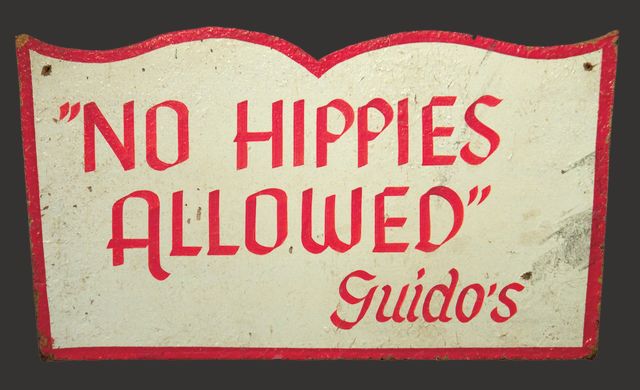
A sign (hand-painted by ski instructor Sepp Uhl) that hung in the window of Guido’s Swiss Inn in 1965, attesting to the culture clash that played out on the streets and slopes of Aspen during the tumultuous decades of the 1960s and ’70s.
1978 Twentieth Century Fox buys the Aspen Skiing Corp, reportedly with profits from Star Wars.
1980 The price of a three-mountain ski pass climbs to $300 (the equivalent of $1,007 in 2021/22), good on Snowmass and Buttermilk, with an Aspen Mountain validation sticker adding an extra $10 ($33 today) per day. The Aspen Highlands pass remains the locals’ protest option.
1981 Denver billionaire Marvin Davis buys 20th Century Fox, and the Aspen Skiing Corp becomes the Aspen Skiing Company (a.k.a. “SkiCo”).
1985 Snowboarding is allowed on a trial basis at Buttermilk. A new high-speed quad, Lift 3, is built on Aspen Mountain.
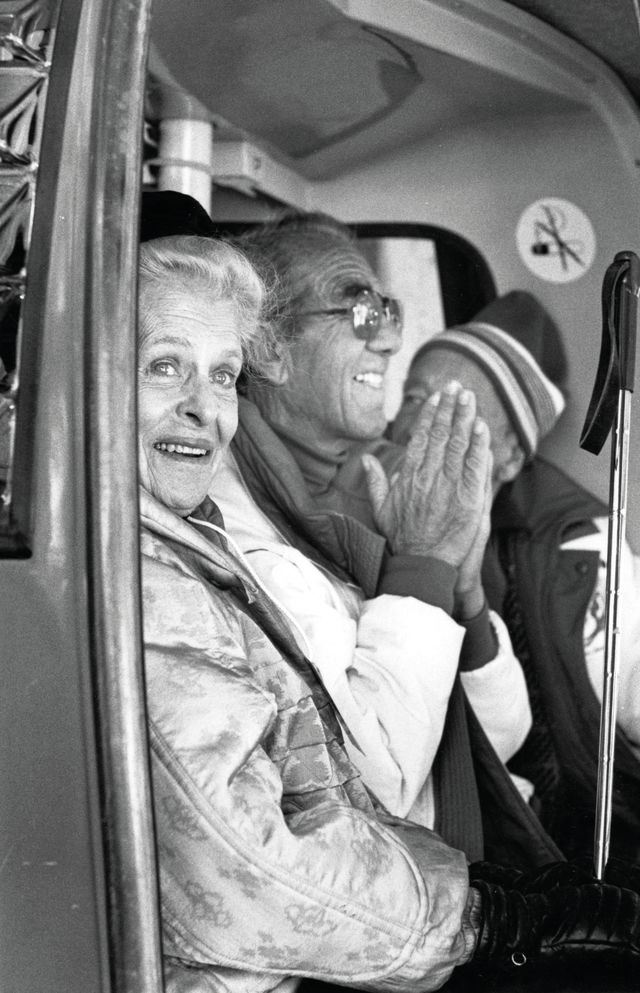
Elizabeth Paepcke and Friedl Pfeifer ride the Silver Queen Gondola (which reduced the base-to-summit ride time from 45 to 15 minutes) at the lift’s dedication on January 16, 1987.
1986 The Silver Queen Gondola opens in December, reducing the ride time to Aspen Mountain’s summit from 45 to 15 minutes.
1988 Snowmass allows snowboarding, which is prohibited on Aspen Mountain.
1991–92 The full three-mountain season pass is reinstated at $1,600 ($3,250 in 2021/22 dollars), without an Aspen Mountain surcharge.
1999 A new Sundeck is built on Aspen Mountain; the private Aspen Mountain Club opens there in February 2000.
2001 SkiCo president Pat O’Donnell, Patagonia’s former CEO, reverses course and allows snowboarding on Aspen Mountain, beginning April 1.
2013–14 With a total of 42 ski lifts operating at a combined capacity of 55,213 skiers per hour, SkiCo’s four mountains (Aspen, Aspen Highlands, Buttermilk, and Snowmass) draw an estimated 1.4 million annual skier visits.
2017 Aspen Mountain hosts the first FIS Alpine World Cup Finals in the United States in 20 years.
2020 At the onset of the coronavirus pandemic, a statewide public health order closes Colorado’s ski resorts on March 15. SkiCo continues to groom runs for the benefit of uphill skiers seeking to make the most of a truncated season.
2021 On November 17, Pitkin County commissioners approve SkiCo’s Pandora’s upgrade plan to add a new lift plus 153 acres of skiable terrain on Aspen Mountain’s upper east flank, one of the most significant expansions in 75 years.













































